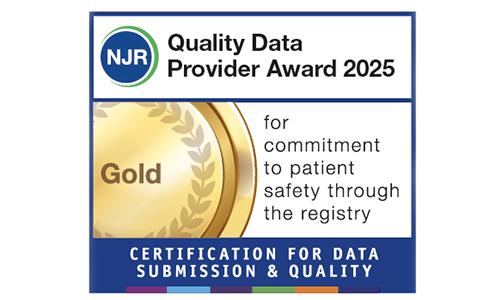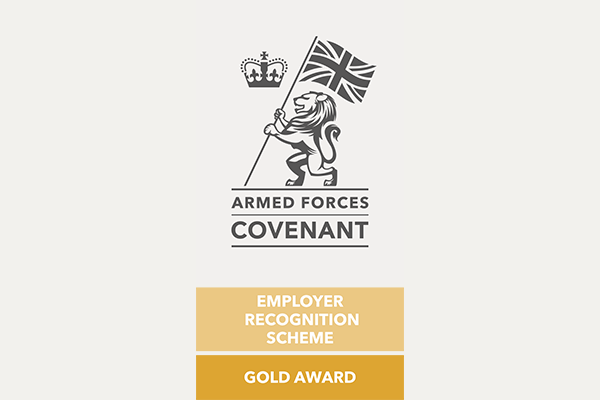A ganglion cyst (sometimes called a bible cyst) is a small, fluid-filled lump that develops just beneath the skin, usually near a joint or tendon. They are most commonly found on the wrists and hands, but can also appear on the feet, ankles, or behind the knees.
Ganglion cysts are harmless and not cancerous, but they can sometimes be uncomfortable, painful, or restrict your movement. Many disappear on their own, but treatment is available if a cyst is affecting your comfort or daily activities.
Here, we explain what ganglion cysts are, their common causes and symptoms, and the treatment options available, including ganglion cyst removal surgery.
What is a ganglion cyst?
A ganglion cyst is a round or oval lump that forms under the skin close to a joint or tendon. They are filled with a thick, jelly-like fluid similar to the synovial fluid that lubricates your joints. The cyst often has a thin stalk that connects it to the joint or tendon beneath.
They can vary in size from a small pea to a grape and may change in size over time. Some are so small they can’t be seen (called occult ganglions) but can still cause pain or discomfort.
Ganglion cysts are:
- Non-cancerous – they will not spread to other areas
- Not contagious – they cannot be passed on to other people
- Often temporary – many disappear within a few months to a year
They are the most common type of lump to develop around joints. While many do not need treatment, some may require aspiration (draining) or surgical removal if they are painful or interfere with movement.
Ganglion cyst symptoms
If you think you might have a ganglion cyst, look out for a smooth, soft lump under your skin with the following features:
- Location – usually near a joint or tendon, most often around your wrists or hands, but also feet, ankles, or behind the knees
- Feel- firm to the touch but not hard, as if it's filled with a dense, jelly-like substance
- Size and shape- typically round or oval in shape, from pea-sized to grape-sized. It may grow or shrink over time
- Discomfort or pain- It may not hurt at all, but can become uncomfortable and even painful when the joint moves
- Nerve symptoms- occasionally press on nearby nerves, causing tingling, numbness, pain, or muscle weakness
- Inflammation – the area around the cyst may become swollen or irritated
When to see a doctor about a ganglion cyst
If you think you have a ganglion cyst, it’s a good idea to see your doctor to get an official diagnosis and to rule out anything else, even if it’s not causing you any discomfort.
You should especially seek medical advice if:
- the lump is growing quickly
- it is painful or restricting movement
- it causes numbness, tingling or weakness
- the skin over the lump becomes red, warm or inflamed
- you are unsure whether it is a cyst or another type of lump
What causes ganglion cysts?
The exact cause of a ganglion cyst is not fully understood. It’s thought that in some cases, injury or damage to a joint or tendon causes the fluid that lines that joint or tendon (called synovial fluid) to leak out into the surrounding skin. This can create a small sac of fluid that is attached to the joint or tendon by a thin stalk.
Possible triggers include:
- Minor injury or repeated stress to a joint or tendon, which may weaken the surrounding tissue
- Joint or tendon irritation from overuse, which may cause fluid to build up
In some cases, ganglion cysts don’t seem to be related to an injury or harm, although this damage may have been too minor to notice. Ganglion cysts are seen more often in women than in men.
Ganglion cyst risk factors
Although the cause isn’t yet fully understood, we do know that some factors make it more likely that you’ll develop a ganglion cyst:
- Sex – more common in women than men
- Age- most often seen in people between the ages of 20 and 50
- Joint wear and tear- especially osteoarthritis in the finger joints
- Previous injury- particularly injuries to the joints or tendons
Ganglion cyst diagnosis
The first step of diagnosing a ganglion cyst is for a doctor or another trained healthcare professional, to perform a physical exam. They’ll look at the size, shape, and location of the cyst and will touch it to assess how it feels.
They may also shine a light onto the ganglion cyst to see if it's partly see-through (translucent). They’ll also ask you questions about when you first noticed the cyst, how long you’ve had it, and what symptoms it causes.
To rule out other conditions or check for any joint damage, further tests, such as X-rays or MRI scans, may be recommended.
In some cases, your doctor may also take a biopsy, where a sample of the fluid in your cyst is removed for further analysis.
Ganglion cyst treatment
In many cases, a ganglion cyst causes no pain or problems and may disappear on its own. However, some can become uncomfortable, inflamed, or press on nearby nerves, leading to pain, tinging, or weakness. If you have a ganglion cyst that’s affecting your daily life, there are a range of treatment options available to you.
How to drain a ganglion cyst
You should never try to drain or pop a ganglion cyst yourself, as this could lead to serious injury or infection.
If your cyst is painful or getting in the way of daily activities, a doctor may offer to drain the fluid using a needle with a simple procedure called aspiration.
This can reduce its size and ease symptoms, but it does not remove the cyst wall, so there is a chance it may refill with fluid over time.
Treating a ganglion cyst at home
f your cyst is not causing much trouble, you may be able to manage it at home until it resolves.
Do not try to pop, drain or cut it yourself. Instead, you could:
- Rest the affected joint or tendon
- Apply gentle heat (for example, a warm compress)
- Take a non-steroidal anti-inflammatory drug (NSAID), such as ibuprofen, to reduce inflammation and pain, if suitable for you
- Use a supportive splint or brace to reduce movement and irritation
A pharmacist can also advise on over-the-counter pain relief and supports that may help.
Ganglion cyst surgery
If a ganglion cyst keeps coming back or causes ongoing pain, your doctor may recommend surgical removal, known as a ganglionectomy.
This procedure removes both the cyst and the stalk that attaches it to the joint or tendon, making it the most effective way to prevent recurrence.
The operation is typically carried out as an outpatient procedure, meaning you can usually go home the same day. In many cases, ganglion cyst surgery is performed by arthroscopy (keyhole surgery), meaning minimal incisions are made. This reduces the risk of complications and helps with faster recovery.
If you choose ganglion cyst surgery, it offers the lowest chances of a cyst returning. But this still could happen, with ganglion cysts recurring in an estimated 15% of patients after surgery.
Can ganglion cysts be left untreated?
Many ganglion cysts disappear naturally over time, often within a few months (though sometimes longer).
If your cyst is painless and does not affect your movement, it can often be safely left alone and simply monitored.
However, you should see a doctor if the cyst becomes painful or inflamed, presses on a nerve, or affects your ability to move the joint.
Ganglion cyst treatment at Ramsay Health Care
At Ramsay Health Care, you’ll be supported by our highly experienced orthopaedic surgeons who regularly diagnose and treat ganglion cysts.
From your very first appointment, our team will offer personalised advice and guidance to help you choose the treatment approach that best suits your needs.
Care is delivered in a modern, comfortable Ramsay hospital near you, with fast access to appointments at times that fit around your schedule.
If your ganglion cyst is causing pain or disrupting your daily life, we can help. Book an appointment with our team today to discuss your treatment options.
Ganglion cyst FAQs


